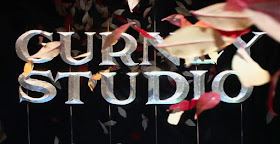Yesterday, quite unexpectedly, a little video I put on Facebook went viral, with 2.5 million views. Here's a link to the video on Facebook, and here is the longer version on YouTube that shows more of the making.
The video was a new 1-minute edit of the making of my handmade animated logo "Gurney Studio." The concept was simple: to alternate the motion graphics shots with behind-the-scenes clips.

I made the video for Instagram, where it got a respectable 10K views. I thought just for fun I'd put it on my public Facebook too. It has been shared especially strongly in the Spanish-speaking world and across Southeast Asia.
Facebook gives you some stats. The majority of watchers were men, age 25-34, and 82% of the audience watched it with the sound off.
Here are some preliminary guesses to why it went so big:
Here are some preliminary guesses to why it went so big:
1. Simple intro line: "A different way to do logo animation."
2. No need to speak English to understand the video.
3. Simple, tight editing: Flurry of 1/2 sec. clips at the beginning, followed by A,B,A,B,A,B.
4. No links out, which probably boosted it in FB's algorithm.
5. "Share-ability" which is an elusive thing. People want to share something that makes them look good.
6. Bottom line is THANK YOU! for watching and sharing. That's what makes it happen.
6. Bottom line is THANK YOU! for watching and sharing. That's what makes it happen.
The comments ranged from people who thought it was a funny stunt to:
"What if Cinema 4D was done practically?"
"Let's try this on our project"
"Bro, this is your kind of stuff,"
"Pretty good, Grandpa!"
"Hey, let's dump our computers; we can get the same results working in the garden."
A lot of shares were among people who work in the graphics trade. One multimedia company said "Reality, first and foremost."
Perhaps we have arrived at the intersection of two vectors: one being what is possible with cutting-edge digital tools and the other being what can be created by hand and shot in-camera. The former requires expensive software and expertise on how to use it, and the latter takes some workshop skills and some level of commitment.
As an artist, I am mesmerized by watching examples of the latest software and how it can capture complex interactions of particle effects and fluid dynamics. But I know that with my learning curve and my budget, the best I could ever accomplish with those tools is a very second rate effort. For me the fun of the practical build is that all those effects are "for free."
Once you make the device, you can place it into new visual environments and situations. It's the gift that keeps on giving.
Once you make the device, you can place it into new visual environments and situations. It's the gift that keeps on giving.
















